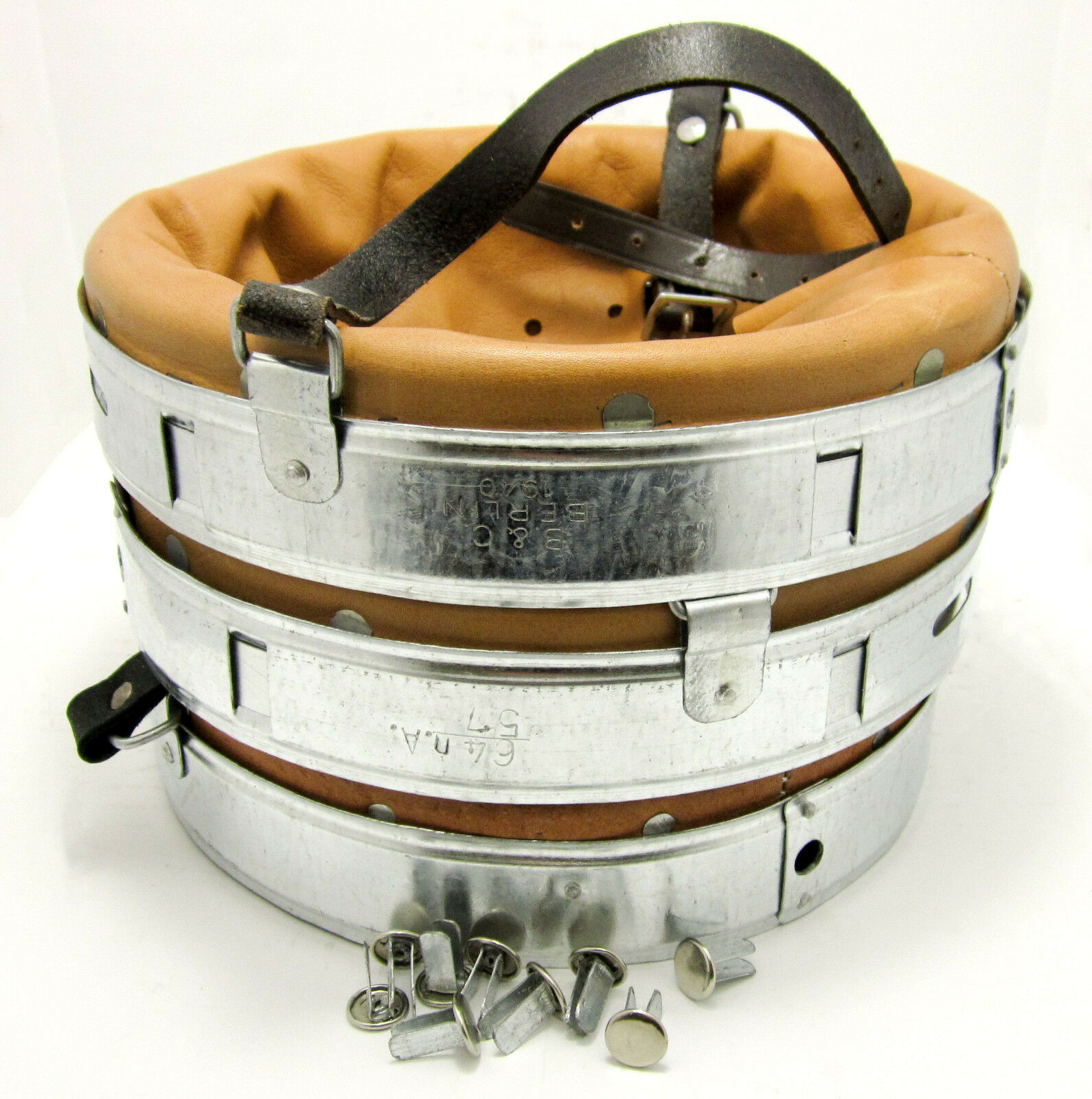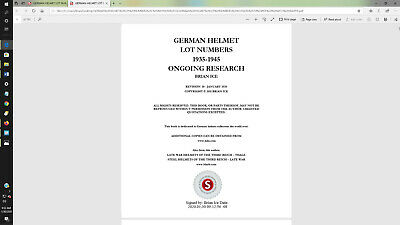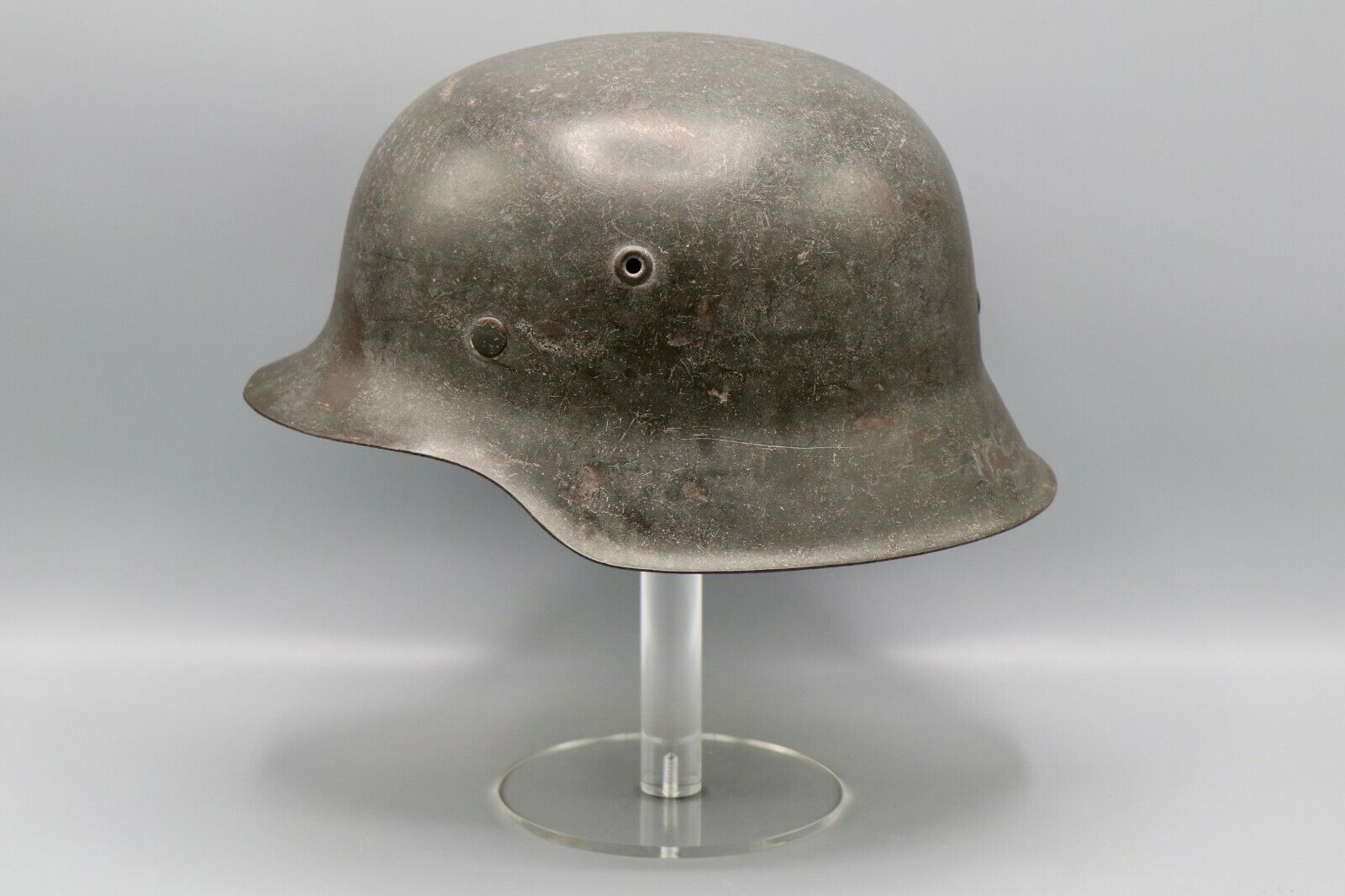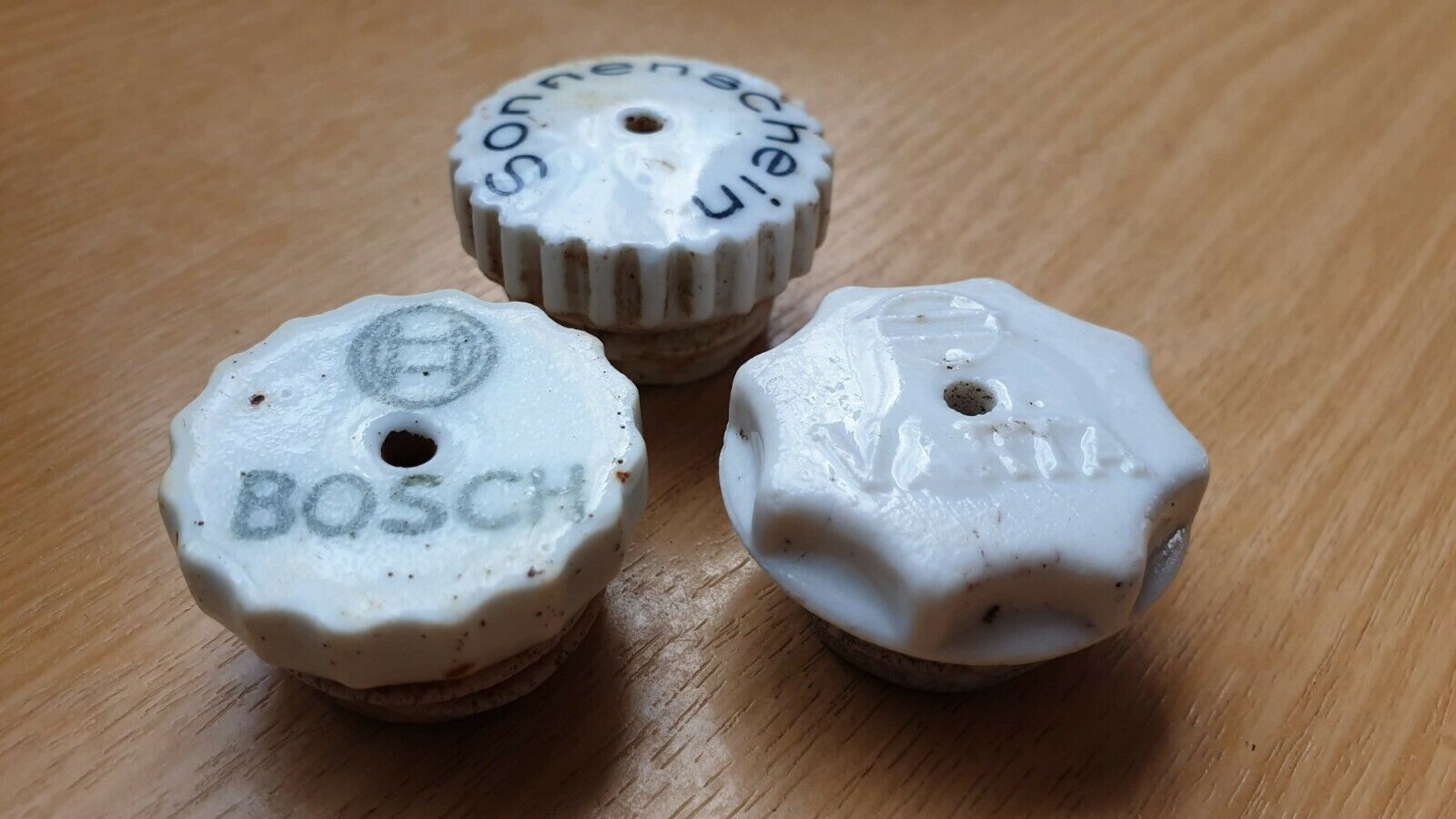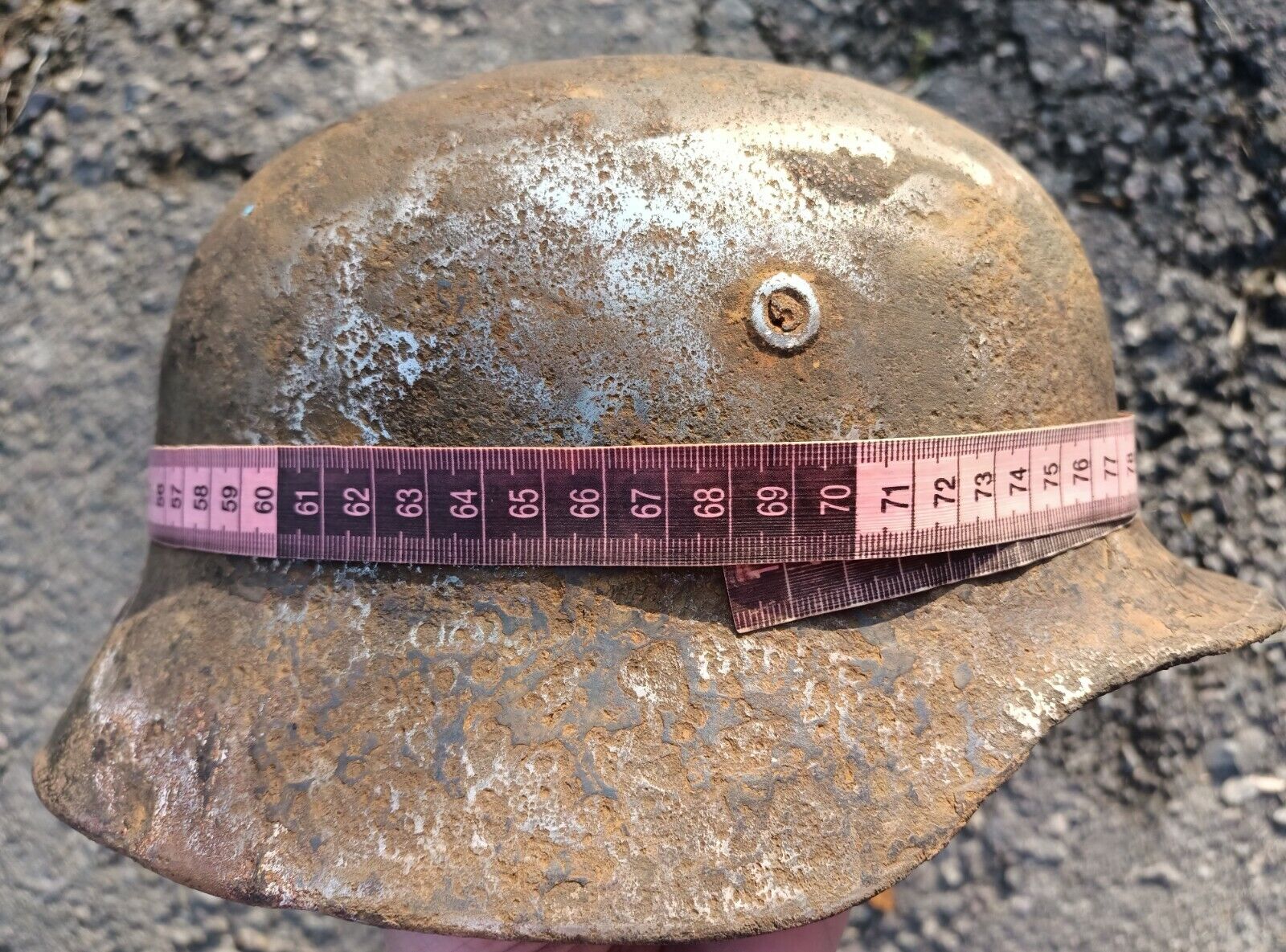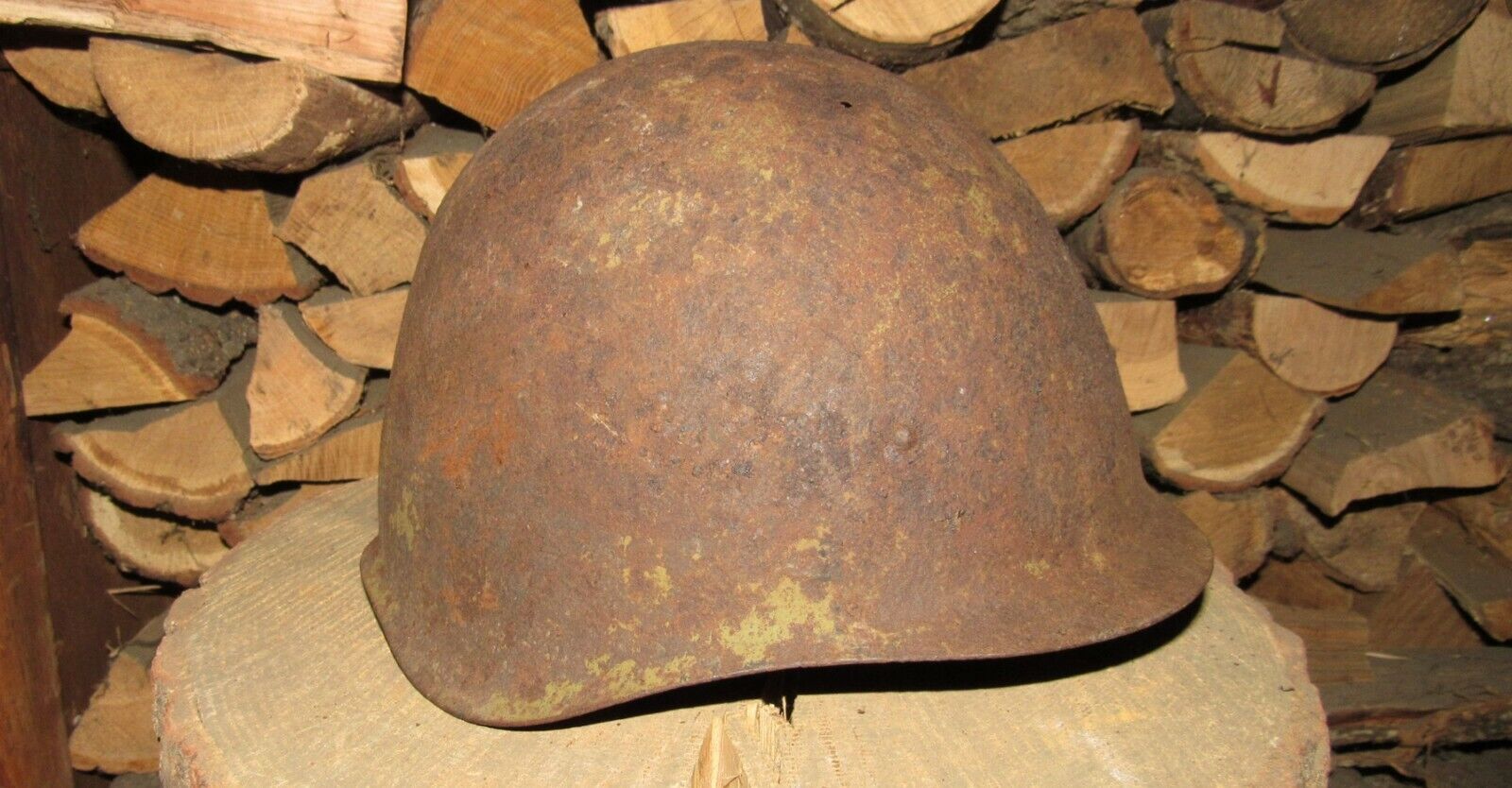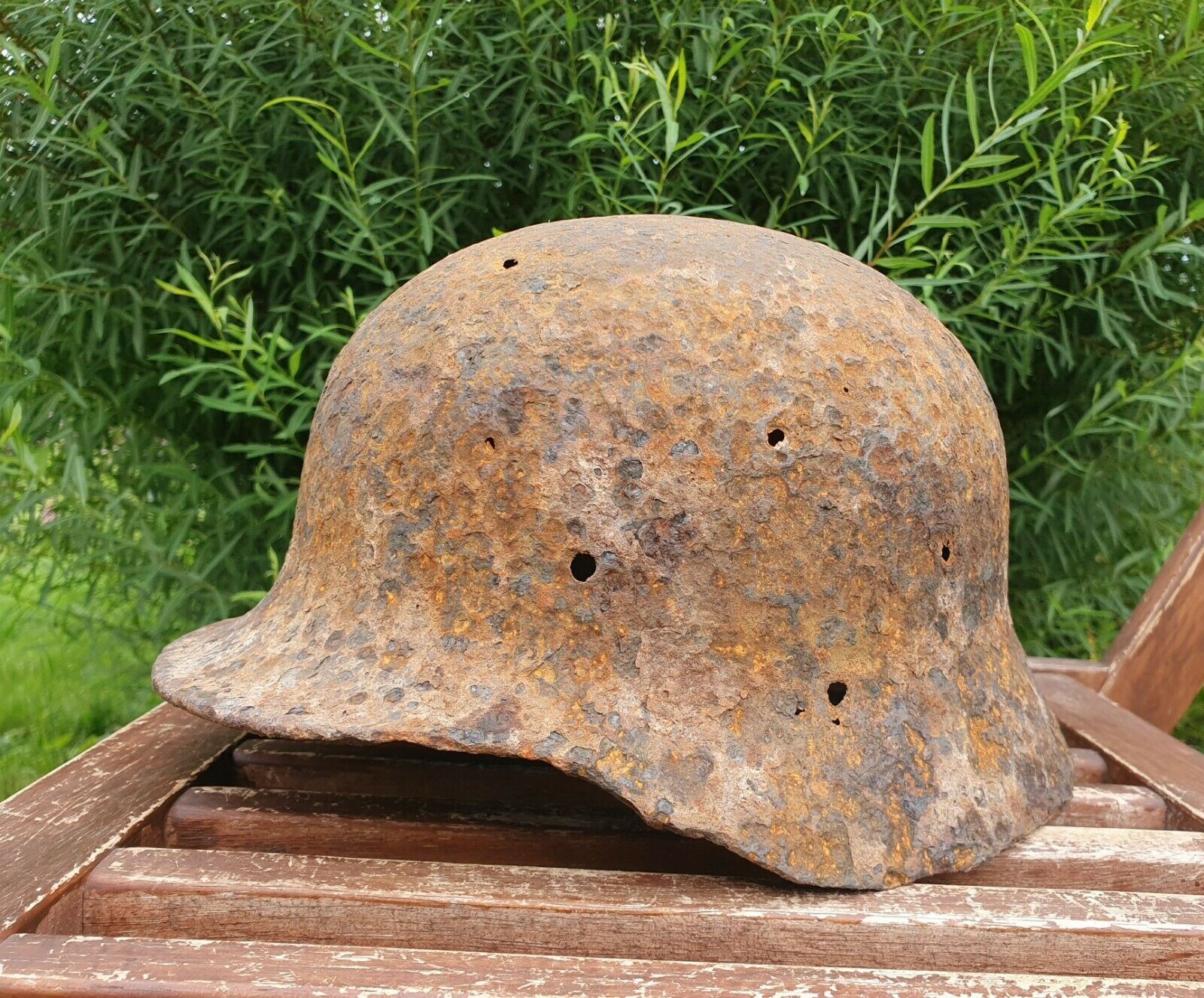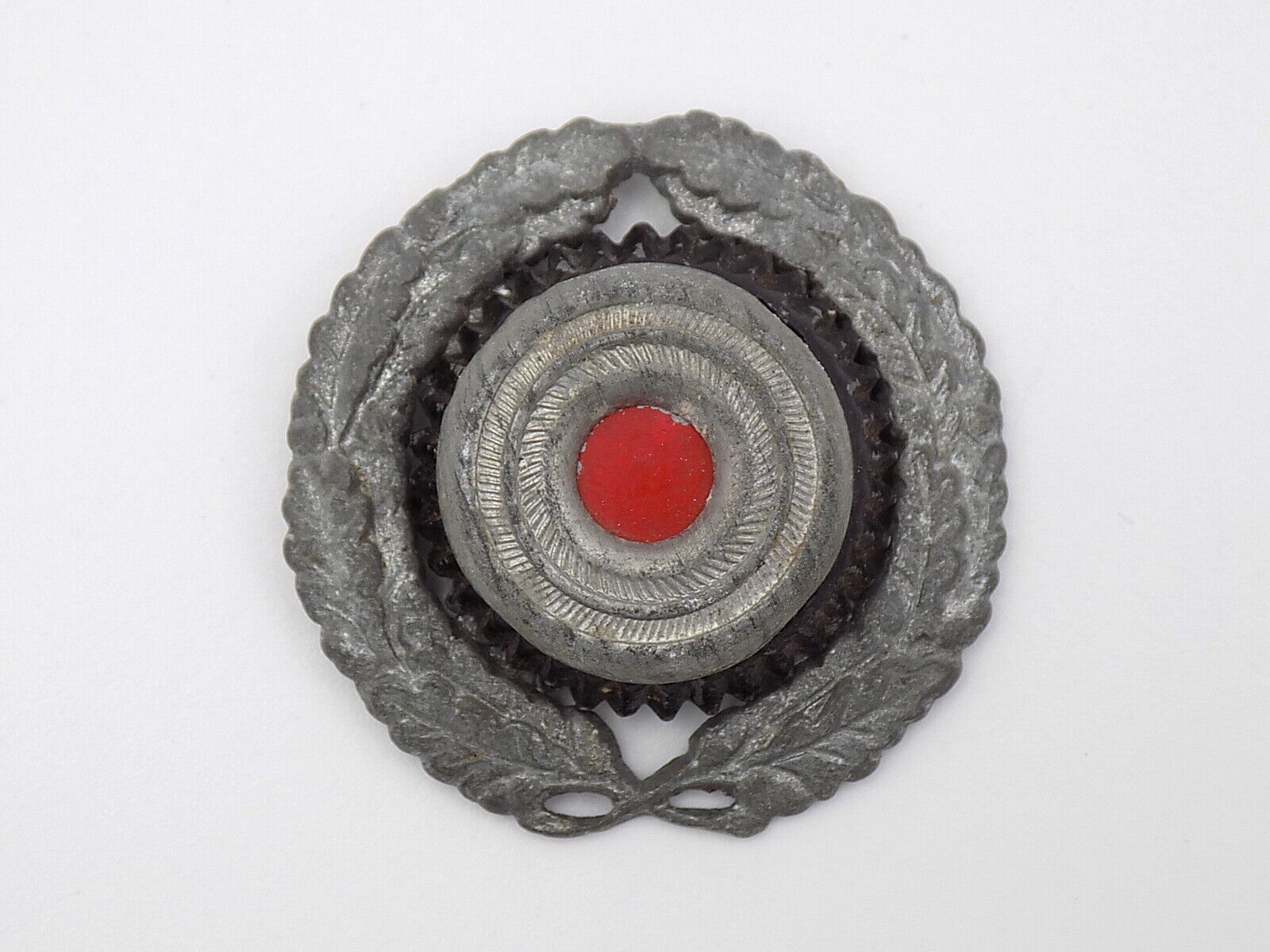-40%
World War One WWI Iron Big Willie Mark Four Tank mask FIRTH of Sheffield 1916
$ 315.74
- Description
- Size Guide
Description
Very rare WW1 splatter mask used by British tank crew to protect themselves from shards and metal fragments caused when hit by gunfire. This one was made by FIRTH of Sheffield and is un-marked and un-dated making it the earliest 1916 issue. It is missing the chain mail skirting which would have hung down protecting the chin and mouth area. In relic condition.This is an extremely rare chance
to own one of the British Empire's Holly Grails of World War One? I have an awesome piece in my collection that I think is time to sell as it is now 104 years since the Battle of Somme in 1916. It actually belongs in a United Kingdom Museum more then here in the USA. It is one of the most sought after items from the Western Front during WWI and is excessively rare to boot.
A British splatter mask worn and designed to help protect the crewmember’s face from shrapnel when looking through the view ports. The eye covers were metal, the mask was leather and there was a chainmail skirt to cover the mouth and chin. Various styles were worn by all sides.
The main reason of this mask’s existence was due to a terrible issue in the tanks during First World War called spalling. Basically, spalling occurs because the energy from the impacting round is transferred to the armor plate. This sends a shockwave through the armor plate, displacing the metal until the other side of the wall is reached by the shockwave. Since the armor plate can’t transfer the energy to anything else, fragments are ripped loose from the inside of the armor plate, and are slung into the fighting compartment at very high lethal velocity. The thicker the armor, the less likely it is for spalling to occur, and the British Mark I-V Tanks (these particular masks were worn by British Mark I-V tank crews) had very thin armor.
The first tanks were mechanically unreliable. There were problems that caused considerable attrition rates during combat deployment and transit. The heavily shelled terrain was impassable to conventional vehicles, and only highly mobile tanks such as the Mark and FTs performed reasonably well. The Mark I’s rhomboid shape, caterpillar tracks, and 26 feet length meant that it could navigate obstacles, especially wide trenches that wheeled vehicles could not.
T
he horse cavalry of old was being replaced first by tanks during WWI and WWII and then by Helicopters in Vietnam etc. Tanks like horse cavalry were used in support of infantry and to mop up after a breakthrough. The WWI British tank commander was also a horse cavalry commander. The British Field Marshall Douglas Haig was 100% a cavalryman. Although he failed with his small amount of tanks at the famous battle of the Somme where 20,000 British were killed in just one days fighting, he none the less ordered 1,000 more tanks
and always remained firmly in favor of further production.
General George S. Patton was also a cavalry tank commander as he was one of the only American generals to wear riding boots and riding pants. This is further evidenced at the Patton Museum of Cavalry and Armor at Fort Knox, KY.
So now I am offering from my collection, this extremely rare battlefield artifact from the "Battle of the Somme". This piece was unearthed near that area not that long ago and my research shows that this was an early British WWI tank drivers artifact. It is a steel mask with tiny slits for the driver to out the tanks port hole and with a chain mail mouth guard. Over the last 105 years, most of the chain mail mask has rusted away but the hardened steel mask it self (shaped like that of the Lone Ranger) exist 100%. The first tanks and drivers mask were rushed out to the Western Front as the British attach was to coincide with a Russian attack on the Eastern Front by the Russians on a particular day. These mask WERE NOT worn by the tank whole crew as some have suggested. Only the driver wore this mask.
The early 1916 original tank drivers mask were produced quickly and were not stamped as they didn't even have time to test them before being shipped. These mask did not start getting stamped in the back until 1917. This is an impossible British military item to find. If you are interested, let me know. This mask cost me a lot to even purchase it myself and then there shipping and insurance from Belgium. This mask is possibly the earliest known and available for purchase British Armored Tank Cavalry Artifact in the world and only I have it. The cost is 9 plus shipping and insurance. I will attach a picture of it for you to view. Again, this is an extremely rare "Battle of Somme" World War One undated by year or by city or by the manufacturer artifact which makes it one of the earliest known ones to even exist in Museums.












